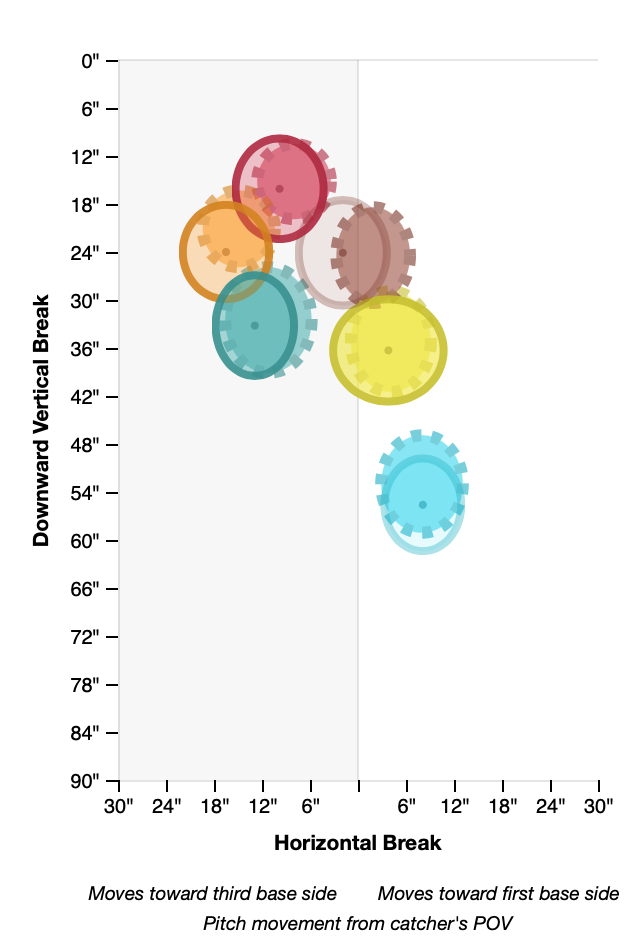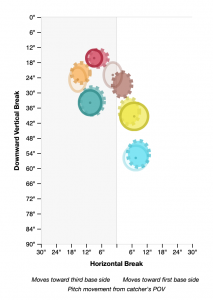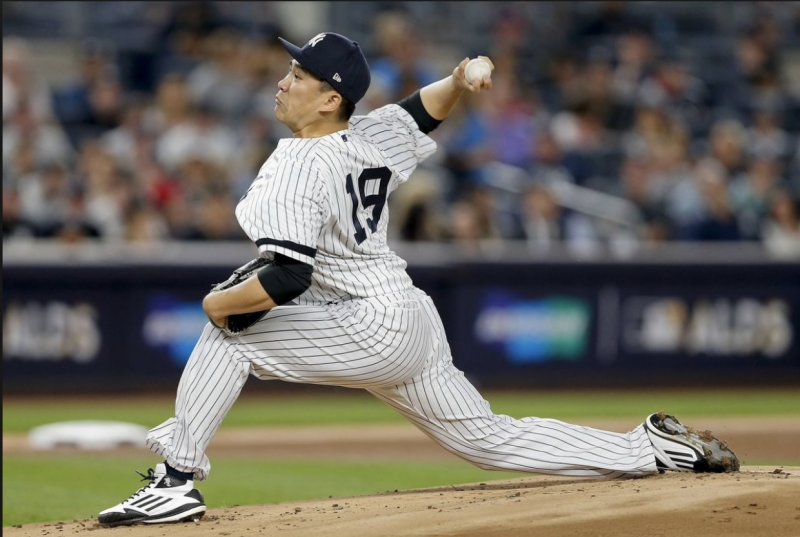The splitter is likely Masahiro Tanaka’s most important pitch. However, so far through 9 starts this year, he has thrown that pitch fewer than at any point in his career (21.9-percent). The value per 100-pitches of his splitter is also by far the worst of his career at -3.95. This number essentially accounts for the number of runs above average that a pitcher has saved with that pitch.
Movement
The below graphic depicts the movement of Tanaka’s pitches from each of the past three seasons. The gear-like shapes represent league averages. The teal-colored shapes represent the splitter. The dots are the average movement while the ovals show the 75-percent range.



The main purpose of the splitter is to have late downward movement. Tanaka’s average vertical drop with the pitch was 33.2 inches in 2017, 34.0 inches in 2018, and 31.4 inches this season.
Hitters’ view
Speaking of the purpose of the splitter, the idea is to have it break late enough so that the hitter does not pick up on the movement. If the pitch looks like it is going to be in the upper part of the zone, it will likely fall right down the middle. If it looks like it is lower in the zone, it can drop down late and generate a swing-and-a-miss or a ground ball.
The below images show Tanaka’s splitter from his last two starts from the catcher’s point of view. First of all, it can easily be seen that he threw many more splitters in his most recent start – three times as many to be exact (27 versus 9). It can also be seen that on average, the commit points are similar. However, while he had a few higher up in the zone, he had many more that were down. This led to only two of eight balls hit into play off of this pitch being base hits versus three of four (including one home run).
More stats
Lindsey Adler recently did a piece for The Athletic in which she dove into Tanaka’s splitter. She noted that he is usually able to generate whiffs at a rate above 30-percent, going even as high as 44.6 in his rookie season. This year, even after Sunday’s start, it is at 16-percent. This has led to easily the lowest strikeout percentage with the pitch of his career (16.9).
Another number that jumps out when looking at numbers against Tanaka’s splitter is opposing batters’ slugging percentage: it is currently at a whopping .678. The highest that number has been prior to this season was in 2017 (.395). We could go on and on, but a couple of other stats to point out: hard hit percentage and put-away percentage. We mentioned how the splitter is Tanaka’s most important pitch – it’s his out pitch. But his put-away percentage is at 20.8-percent in comparison to last year’s mark of 26.4. And the graph below shows that his splitter is being hit harder than ever.
Last time out Tanaka was dominant, largely due to the success of his splitter. If he can continue to build off of that start and get a feel for arguably his best pitch, he can be a dangerous weapon at the top of the Yankees rotation.






